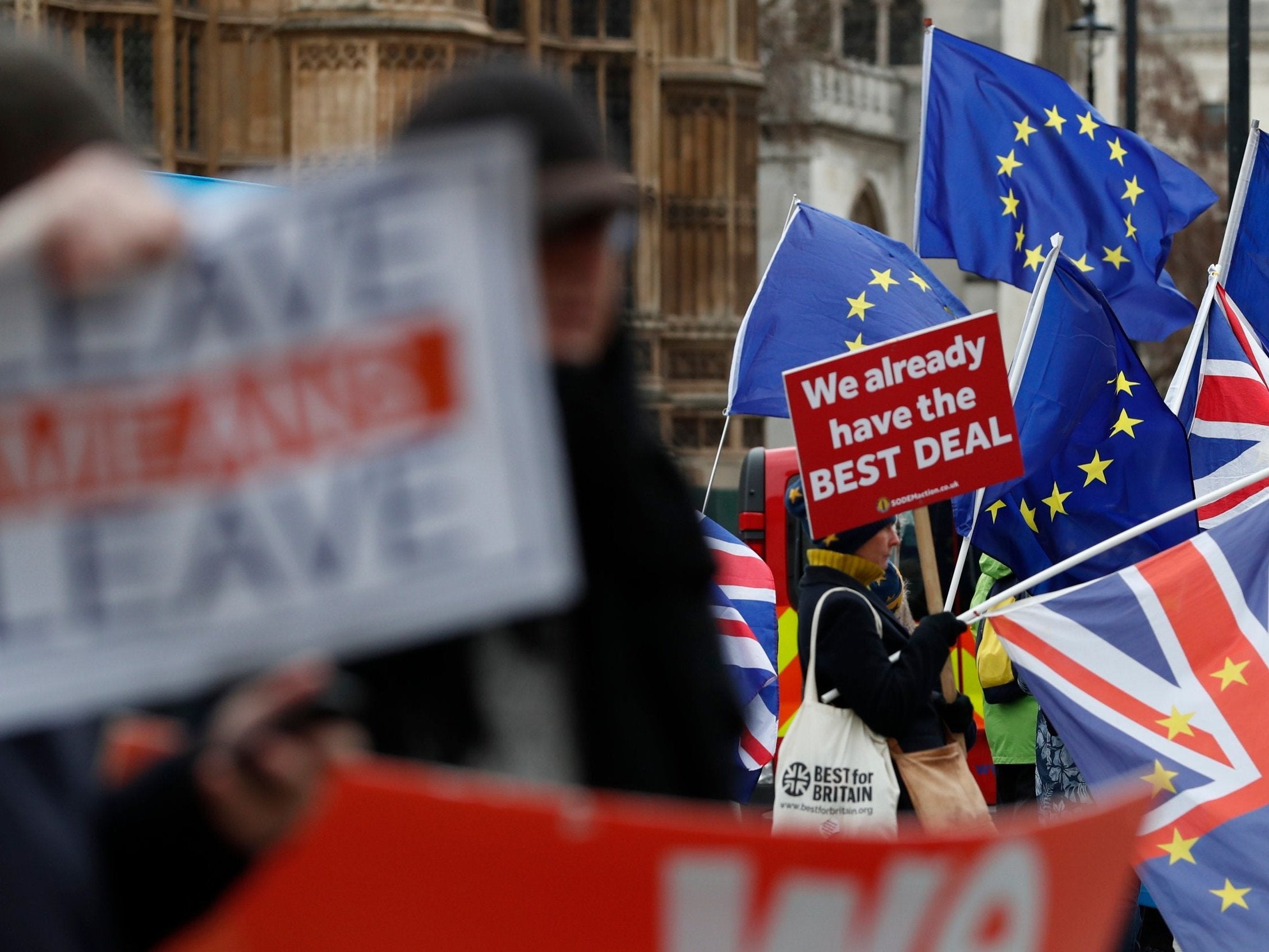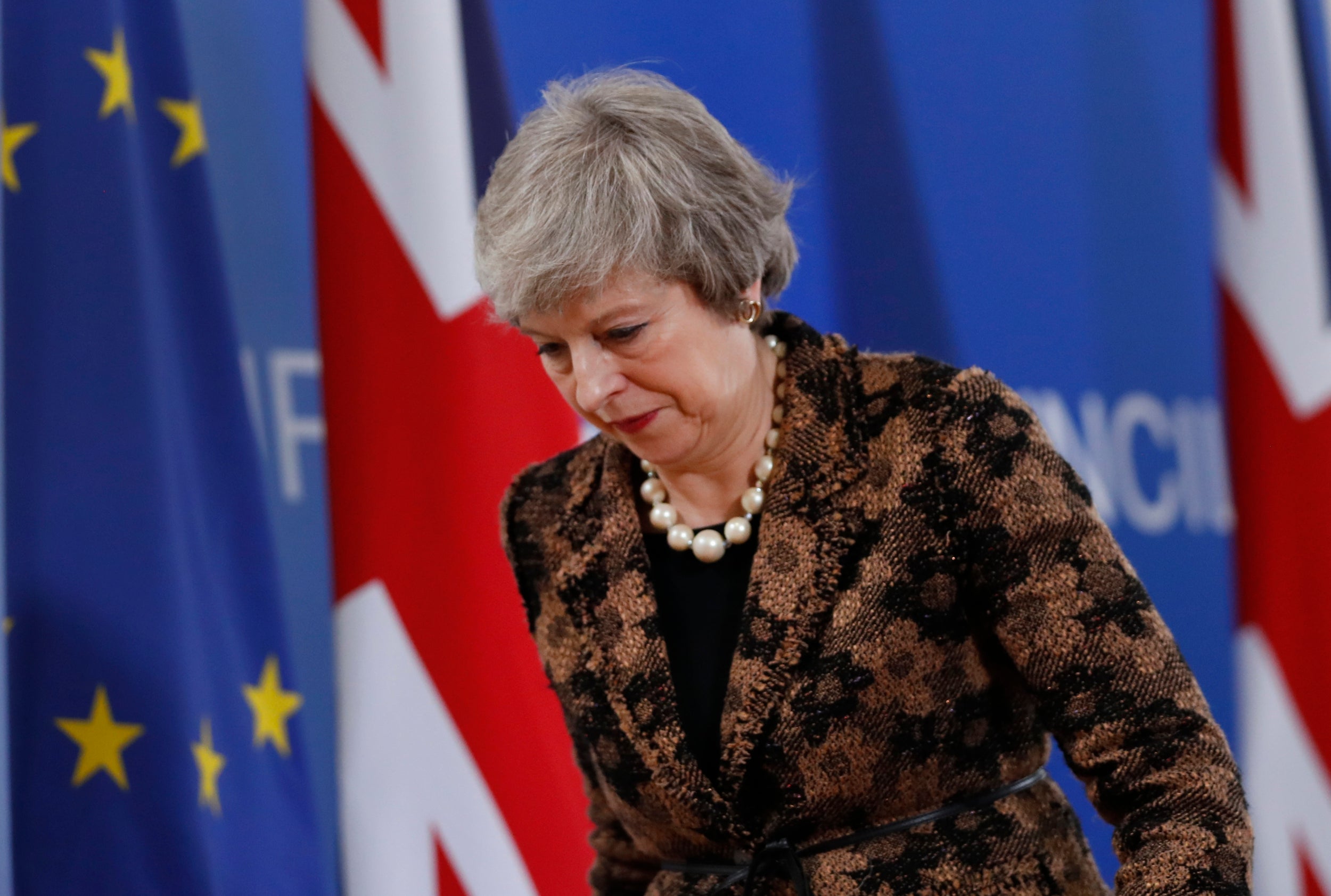Theresa May’s prospects of getting her Brexit deal through parliament look bleak after a momentous year in politics
Andrew Grice has reported on many remarkable political events, but the ongoing Brexit shenanigans take the biscuit


Your support helps us to tell the story
From reproductive rights to climate change to Big Tech, The Independent is on the ground when the story is developing. Whether it's investigating the financials of Elon Musk's pro-Trump PAC or producing our latest documentary, 'The A Word', which shines a light on the American women fighting for reproductive rights, we know how important it is to parse out the facts from the messaging.
At such a critical moment in US history, we need reporters on the ground. Your donation allows us to keep sending journalists to speak to both sides of the story.
The Independent is trusted by Americans across the entire political spectrum. And unlike many other quality news outlets, we choose not to lock Americans out of our reporting and analysis with paywalls. We believe quality journalism should be available to everyone, paid for by those who can afford it.
Your support makes all the difference.A year ago, few politicians imagined the UK would end 2018 without a signed and sealed Brexit deal that could be delivered on 29 March 2019. But a series of final deadlines came and went in October, November and again this month.
The year in Brexit was shaped by an event just before last Christmas. Few at Westminster realised its significance at the time. There was a sense of relief when Theresa May nudged stage one of the sticky Brexit negotiations over the line, dashing to Brussels in the early hours to clinch an agreement that had been derailed by the Tories’ pesky partners, Northern Ireland’s Democratic Unionist Party (DUP).
The small print of the joint UK-EU report included a backstop to prevent a hard border between Northern Ireland and the republic, an insurance policy if no long-term trade agreement had been reached when a transitional period ends in December 2020. Under its terms, the province would remain in “full alignment” with the EU single market and customs union.

The innocuous-sounding backstop came to dominate the Brexit debate. Cabinet ministers later claimed Downing Street misled them about its implications. The penny dropped when the EU turned last December’s report into the legalese of a treaty: Northern Ireland would be part of a “common regulatory area” and “customs territory”. This crossed the DUP’s “blood red line” that the province should not have a different system to the rest of the UK.
May declared that no prime minister could accept a border in the Irish Sea and UK negotiators expended much energy on persuading the EU to change the backstop so it would cover the UK as a whole. But the prospect of an indefinite customs union fuelled a rebellion by Tory Eurosceptics, and remains the biggest roadblock in May’s path.
As the negotiations continued, it became obvious the UK could not serve up her foreign secretary Boris Johnson’s menu – having its cake and eating it. It could not enjoy the single market’s benefits without being in it and accepting responsibilities such as the free movement of people.
Although May did not ultimately have much to cheer on Brexit during 2018, she took some comfort in confounding the pessimists, at least initially – first with the phase one deal also covering citizens’ rights and a £39bn divorce payment; and again in March, when she calmed business nerves by securing a 21-month “status quo” transition.
Yet critics on both sides of the Channel accused the prime minister of procrastinating rather than facing up to the inevitable compromises and tough choices, and not being honest with the public or parliament about them. Her undoubted resilience could also be seen as stubbornness.
May was trapped by the red lines she set after becoming prime minister, saying the UK would be outside the single market and customs union and beyond the reach of the European Court of Justice. She was overly anxious to convince Brexiteer MPs they could trust her, even though she had backed Remain in the 2016 referendum.
As the negotiations continued, it became obvious the UK could not serve up her foreign secretary Boris Johnson’s menu – having its cake and eating it. It could not enjoy the single market’s benefits without being in it and accepting responsibilities such as the free movement of people. According to one cabinet minister: “The PM gradually realised the UK would need to stick close to its biggest market to cushion Brexit’s impact on the economy.” But she repeatedly put off the evil day when she would admit it, and blur her red lines.
The Brexiteers’ breezy optimism that the EU would be forced to hand the UK a good deal proved ever more obviously naive. This was not a traditional negotiation among 28 EU members, who would find a traditional last-minute, late night compromise. It was 27 versus one who was leaving the club and would soon be a “third country”. Crucially, 26 countries would stand solidly behind the one member most affected by the UK’s decision (aside from the UK itself) – Ireland. Nor would ministers in London succeed in their attempt to “divide and rule” the 27, or go over the head of Michel Barnier, the European Commission’s chief negotiator, by appealing to the 27 national leaders. They gave May a tiny slot on Brexit at their summits and then banished her from the room.
The EU set the agenda and called the shots. May’s decision to trigger the two-year Article 50 process before deciding the shape of her desired deal returned to haunt her. The EU had a powerful weapon, time, and a clear deadline of March 2019, when the UK would leave without a deal if agreement was not reached.
Amid mounting frustration in Brussels about the absence of a UK blueprint, May summoned her cabinet to her Chequers country retreat in July. It seemed to work at first, and her plan was approved. In fact, several ministers expressed grave doubts and two days later, David Davis, the Brexit secretary, and then Johnson resigned. Davis complained that his plan for a Canada-style free trade agreement had been rewritten behind his back by Olly Robbins, the UK negotiator working directly to May, to include a “common rule book” for goods and agri-foods.
The UK proposal was rejected anyway by the EU’s special summit in Salzburg in September in an embarrassing rebuff which a chastened May had not expected.
The EU set the agenda and called the shots. May’s decision to trigger the two-year Article 50 process before deciding the shape of her desired deal, returned to haunt her.
Davis’s successor, Dominic Raab, reached the same conclusion as him and quit, along with Esther McVey, during the next wave of resignations in November. With hindsight, May’s decision to set up the Department for Exiting the EU (DExEU) was a mistake: it would have been better to admit she would run the show from No 10 and the Cabinet Office’s Europe unit.
Raab and McVey could not stomach the deal May finally struck with the EU – a 585-page withdrawal agreement and a vague political declaration on the future UK-EU partnership, which to many looked like the “blind Brexit” May had always dismissed.
After the November resignations, May’s premiership hung by a thread. She was saved by Michael Gove’s decision to stay in the cabinet. The long-awaited deal was welcomed by business but failed to produce the political momentum ministers had expected. The opposite happened, as the Tory revolt against it spiralled. May’s deal united her party’s warring factions against the UK being a “vassal state,” a “rule-taker, not rule-maker”. Eurosceptics saw it as not delivering the 2016 referendum decision, while pro-EU Tories regarded it as worse than the UK’s current membership terms.
May thus postponed this month’s crunch Commons vote on the deal, choosing a humiliating retreat over a humiliating defeat. It was the nadir of her annus horribilis. Shortly afterwards, her critics secured the 48 Tory MPs needed to force a vote of confidence in her as party leader. She survived, but it was a pyrrhic victory, with 117 (more than a third of her MPs) voting against her.
Cabinet ministers, sensing that May’s authority was weakened and her deal sunk, began setting out their ideas for a Plan B. They included: a Norway-plus agreement (inside the single market and a customs union); a “managed no-deal” exit; and a referendum, which looked a remote possibility when The Independent launched its campaign for the public to have the Final Say in July but is now a real prospect.
At the EU’s final summit of the year, a desperate May resorted to pleading with her counterparts to show her some Christmas cheer in the form of legal guarantees that the backstop would be temporary. They were not forthcoming. Although she will try again in the new year, her prospects of winning Commons approval for her deal look bleak as a momentous year in politics comes to an end.
Join our commenting forum
Join thought-provoking conversations, follow other Independent readers and see their replies
Comments